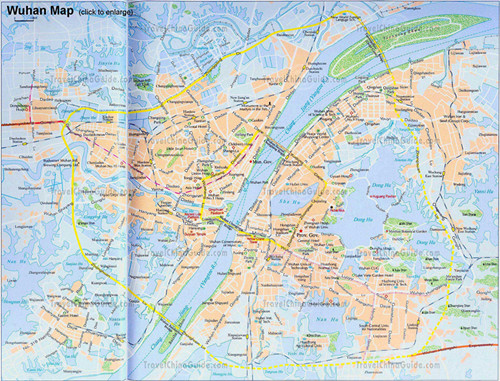WuHan Overview
Welcome to the charming River City --- Wuhan!
Wuhan boasts plenty of rivers and lakes. Thanks to its increasing openness and ever-expanding international status, in particular the all-dimensional, multi-layered and wide-ranging pattern of opening-up, Wuhan has attracted a growing number of foreign friends who have come here for employment, education, sightseeing and living in recent years.
Today’s Wuhan, full of dynamism and vitality, is witnessing a rapid economic and social development, dazzling changes in urban construction and improving livelihood of the people and also on the way to become an incredibly prosperous, vigorous and promising city. For these, our heartfelt gratitude shall be extended to those friends who have always been dedicating intelligence and perspiration, showing interest and support for Wuhan’s economic growth and social development!
This Guide for Foreigners in Wuhan, wrote by the Foreign Affairs Office of Wuhan Municipal People’s Government is directed by Mayor Tang Liangzhi’s instruction of implementing the “Home in Wuhan” Project for the foreign nationals to find homes, make desirable settlement, enjoy the feelings of being at home as well as live in peace and work happily in Wuhan. The book contains rich and practical contents, including the up-to-date information concerning their most attentive issues such as entry and exit procedures, residence, safety, tourism and investment.
We sincerely hope that this book will provide foreign nationals in Wuhan with more help and convenience. It is also our wish for you to constantly pay close attention to Wuhan, publicize it, invest in it, construct it and make joint efforts with us to create a better future for Wuhan.

Geography
Wuhan, the only sub-provincial city in Central China, is now the capital of Hubei Province with an area of 8,494 square kilometers. The world's 3rd longest river-the Yangtze River and its greatest branch, the Hanshui River flow across the city and divide it into three parts, namely Wuchang, Hankou and Hanyang. It is located at 113°41'E to 115°05' E and 29°58'N to 31°22' N. It has a humid subtropical monsoon climate with abundant rainfall, sunshine and four distinctive seasons.
Population
Wuhan has 13 districts, among which Jiang'an, Jianghan, Qiaokou, Hanyang, Wuchang, Hongshan and Qingshan Districts are downtowns while Dongxihu, Caidian, Jiangxia, Huangpi, Xinzhou and Hannan Districts are new towns. Wuchang, Hanyang, Jiang'an, Jianghan and Qiaokou Districts are old towns. Wuhan also has three state-level development zones, i.e. Wuhan Economic and Technological Development Zone (Zhuankou Development Zone), East Lake Hi-Tech Development Zone (Optical Valley of China) and Wuhan Wujiashan Economic and Technological Development Zone. Now the number of registered permanent residents is about 9,790,000.
History
Wuhan enjoys a time-honored history. According to archaeological discoveries and ancient records, more than 10,000 years ago, some people had already settled down in Wuhan. Over 3,500 years ago, the light of urban civilization began to spark in Panlongcheng, an ancient city in the northern area of Wuhan at that time. During the Three Kingdoms Period some 1,700 years ago, Wuhan was a noted battlefield. After the Ming and the Qing Dynasties, Hankou gradually developed itself into one of “the Four Famous Towns” nationwide. More than 100 years ago, Wuchang was the birthplace of the Revolution of 1911.
Foreign Relations
Granted by the nation as one of the open cities along the Yangtze River in 1992, Wuhan has gradually become a hot area in attracting foreign investments. Among the Global 500 international enterprises, 84 have already invested in Wuhan. The French Consulate General in Wuhan, the US Consulate General in Wuhan and ROK Consulate General in Wuhan were set up in 1998, 2008 and 2011 respectively.
Wuhan enjoys ever-closer exchanges with other countries and regions in the world in economy, trade, science and technology, education, culture and all the other fields as well as dynamic and friendly ties with the governments, people and social organizations. Now it has 17 sister cities around the world, namely Oita in Japan, Pittsburgh in the United States, Duisburg in Germany, Manchester in the United Kingdom, Galati in Romania, Kiev in Ukraine, Khartoum in Sudan, Gyor in Hungary, Bordeaux in France, Arnhem in Netherlands, Cheong Ju in South Korea, Sankt Polten in Austria, Christchurch in New Zealand, Markham in Canada, Borlange in Sweden, Kopavogur in Iceland and Ashdod in Israel.
For details: http://english.wh.gov.cn/